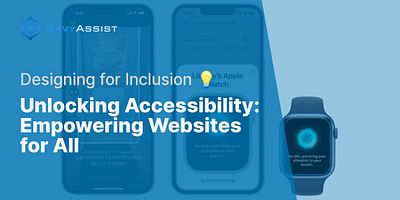Katelyn is a dedicated content creator with a keen interest in the field of disability and accessibility. She has extensive experience writing on topics such as assistive technology, accessible design, and rights for the disabled. Katelyn continually seeks out new areas of research to further her knowledge and to empower her readers.
When it comes to disability resources and accessibility, there are often many questions that arise. As someone who is passionate about empowering people with disabilities, I'm here to provide answers to some of the most common questions. Let's dive in!
1. What is assistive technology, and how can it help people with disabilities?
Assistive technology refers to any device, software, or equipment that helps individuals with disabilities perform tasks they might otherwise struggle with. It can include screen readers for the blind, one-handed keyboards for those with limited mobility, speech-to-text software for individuals with speech impairments, and much more. Assistive technology aims to enhance independence, accessibility, and inclusion for people with disabilities.
2. What are some of the best screen readers for individuals who are blind or visually impaired?
There are several excellent screen readers available for individuals who are blind or visually impaired. Some popular options include JAWS (Job Access With Speech), NVDA (NonVisual Desktop Access), and VoiceOver (built-in on Apple devices). These screen readers use synthetic speech to read aloud the content on a computer or mobile device, enabling individuals to navigate websites, documents, and applications.
3. Are there any one-handed keyboards available for individuals with limited mobility?
Yes, there are one-handed keyboards specifically designed for individuals with limited mobility. These keyboards have a compact layout, allowing users to type with just one hand. They often feature customizable key layouts and ergonomic designs to accommodate different needs. Some popular one-handed keyboards include the Matias Half-QWERTY Keyboard and the Maltron Single-Handed Keyboard.
4. What speech-to-text software is available for individuals with speech impairments?
Speech-to-text software, also known as voice recognition software, can be a game-changer for individuals with speech impairments. It converts spoken words into written text, allowing users to communicate through typing or dictation. Some popular speech-to-text software options include Dragon NaturallySpeaking, Google Docs Voice Typing, and Windows Speech Recognition.
5. How can I ensure my website or app is accessible for people with disabilities?
Creating an accessible website or app is crucial for ensuring equal access for all users. Some key considerations include providing alternative text for images, using descriptive headings and proper semantic markup, ensuring keyboard accessibility, and providing captions or transcripts for multimedia content. Following the Web Content Accessibility Guidelines (WCAG) is a great starting point for designing and developing accessible digital experiences.
6. Are there any mobile apps specifically designed for people with disabilities?
Yes, there are numerous mobile apps available that cater to the needs of people with disabilities. These apps cover a wide range of functionalities, from communication aids for individuals with speech impairments to apps that assist with organization, navigation, and accessibility. Some popular examples include Proloquo2Go, Be My Eyes, and Seeing AI.
Remember, these are just a few common questions about disability resources and accessibility. If you have any specific concerns or need further assistance, don't hesitate to reach out. Empowering individuals with disabilities through assistive technology and accessible design is our mission, and we're here to help you every step of the way.















